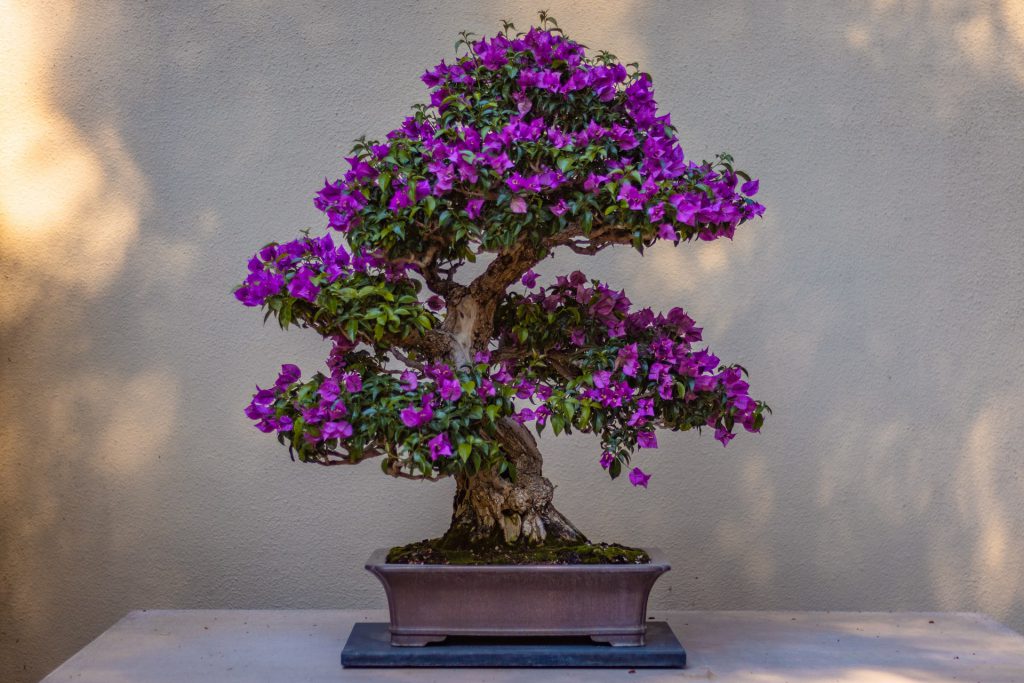Wisteria Bonsai Tree

The Wisteria Bonsai Tree is a beautiful and unique addition to any garden or home. This tree is known for its fragrant flowers that bloom in the springtime. These bonsai trees can be grown indoors or outdoors and can be trained to grow in a variety of shapes. They can be either deciduous or evergreen, and they can grow anywhere from 6 to 30 feet tall.
Care and Maintenance
Type of soil
You have a few different options when it comes to the type of soil for your wisteria bonsai tree. One option is to use regular potting soil that is well-draining. This type of soil will help to ensure that your tree does not become waterlogged. Another option is to create a unique mix specifically for bonsai trees. This mix can include ingredients like vermiculite, peat moss, and perlite. It is crucial to ensure that the soil you use drains well, as wisteria trees do not like to be in wet conditions for extended periods of time.
Potting
The wisteria bonsai tree is a popular choice for many bonsai enthusiasts. This tree can be easily trained and has a long blooming period. The wisteria can be potted in either a formal or informal style, but most people pot the tree more casually to showcase its cascading branches.
When potting a wisteria bonsai tree, use a well-draining soil mix and plant the tree in a container that is two sizes larger than the root ball. If you are using a container that doesn’t have drainage holes, be sure to place some rocks or broken pottery in the bottom of the container to help with drainage. Water the tree regularly, but do not overwater it. Fertilize the tree every other month with a balanced fertilizer.
Placement
When choosing a location for your tree, you will want to take into consideration the amount of sunlight it will receive as well as how much space it will need. Wisteria trees prefer full sun and plenty of room to grow, so be sure to place it in an area where it will have direct sunlight for at least six hours a day and plenty of space to spread out.
Watering
Watering is crucial to the health of the tree. The tree should be watered when the top 2-3 inches of soil are dry. If the tree is overwatered, it will cause the roots to rot. If the tree is not watered enough, it will cause the leaves to turn brown and fall off. I
Fertilizing
Wisteria bonsai trees are beautiful, flowering plants that can be grown indoors or outdoors. If you are growing your wisteria bonsai tree indoors, you will need to fertilize it regularly with a water-soluble fertilizer. If you are growing your tree outdoors, you will only need to fertilize it once a year in the springtime. Be sure to use a fertilizer that is high in nitrogen and phosphorus and low in potassium.
Temperature
Wisteria Bonsai Tree is a temperate climate tree. The ideal temperature range for Wisteria Bonsai Tree is 50-80 degrees Fahrenheit. Wisteria Bonsai Tree can tolerate temperatures below freezing; however, the tree should be brought indoors if the temperature is expected to drop below 30 degrees Fahrenheit. Wisteria Bonsai Tree prefers moist but not wet soil and should be watered regularly.
Pruning and wiring
Pruning and wiring a wisteria bonsai tree is an essential part of training the tree to grow in the desired shape. The main goal when pruning a wisteria bonsai is to maintain the health of the tree and encourage it to grow in the direction you want. Pruning should be done annually, during late winter or early spring, before new growth begins.
When wiring a wisteria bonsai, it’s important to use soft wire and be very gentle with the branches. The wire should be applied in an S-shape, starting at the base of the branch and wrapped towards the tip. Be sure not to wrap the wire too tightly, as this can damage the branch.
Repotting
If you want to keep your wisteria bonsai tree looking its best, you will need to repot it every two or three years. You can tell it is time to repot your tree when the potting mix starts to break down, and the roots start growing close to the edge of the pot.
When repotting your wisteria bonsai tree, use a pot that is only slightly larger than the current pot. Too much space between the pot and the roots will cause the roots to grow out of control.